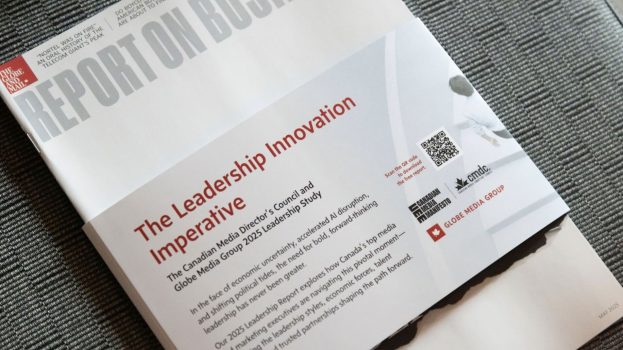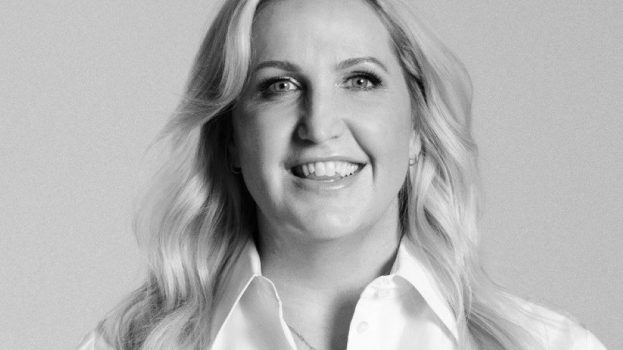The Vancouver Media Directors’ Council is taking the offensive in its war against the drudgery of paperwork. Next month the association is launching an Electronic Data Interchange (EDI) test involving three agencies and representatives from each medium, broadcast and non-broadcast.
The project is a test of EwindEDI software from Warren Lamb & Associates of Poughquag, N.Y. The software, first implemented in Australia, is currently being used by the cable TV industry in the U.S. and is rapidly expanding in that country.
The appeal of EwindEDI is that it works invisibly and seamlessly with all software systems used by media buyers and sellers to automate processes once done by hand and through hours of data input. It would enable speedy electronic transfer of media buy/sell orders, invoices, makegoods and even upfront negotiations.
The software offers direct, secure, encrypted communication through the Internet, without a third-party clearinghouse and with a fixed operating cost.
What EwindEDI also does is overcome and eliminate the major hurdle that has held back implementation of EDI in Canada until now – the massive cost of participants having to do a wholesale change or standardization of their media management systems.
Rick Sanderson, a VMDC board member and media director at Vancouver’s Bryant Fulton & Shee, says it’s imperative that the industry drastically cuts or eliminates the time-sucking, accounting-type tasks in media departments, now.
Sanderson says the EwindEDI system is incredibly cost effective (approximately a $2,500 one-time cost), so much so that every agency can’t afford not to implement EDI.
‘Even if there are some rough spots in the early stages, there’s too much at stake not to go ahead. If you wait until everything is perfect, it will never happen.’
Sanderson’s only concern is that agency management doesn’t look at EDI as a way to cut costs by cutting back on staff.
‘What we hear a lot from clients is ‘give us creative media.’ We have the resources to do that, they’re just being squandered on menial tasks such as invoice checking. If we automate [these functions, they] would happen more quickly and more accurately – while a person was being creative and applying their thinking to media strategy.’
An industry-supported EDI project in Toronto, Electronic Space & Time, began six years ago but has now gone into hibernation.
Most of the EDI providers consulted by ES&T offered software and then operated as a third-party clearing house for the paperwork, charging a fee for each transaction such as an invoice. That fee could amount to millions of dollars per year for some agencies.
In Canada, advertising agencies are pretty evenly split between the use of Donovan Data Systems and Adtraq software systems to plan and schedule media buys.
Adtraq is a system available from Encoda Systems. Encoda has recently added Spotdata to the Adtraq equation in Canada. Spotdata is a Web site clearinghouse that allows buyers and suppliers to exchange electronic invoices. Encoda Systems in Boston is currently working on expanding Spotdata to include other functions such as orders and makegoods.
Media suppliers use different software systems. The predominant broadcast system is also from Encoda.
David Harrison, president of Harrison Young Pesonen & Newell and chairman of the dormant ES&T initiative, says the major problem has been getting the system suppliers to cooperate.
It’s fine to have software solutions to enable different systems to communicate but he says it means nothing unless all the system suppliers get involved.
Harrison says ES&T have spent a million dollars over the past few years to set standards and kick start EDI with no result. There are no more funds and he says media buyers are frustrated and disheartened.
‘We’re going to run up the white flag pretty soon because we can’t keep doing all the administration and infrastructure stuff we have to do and also be in the media management business for the prices
we charge for our services. It’s not possible.’
There are currently some other small EDI tests underway in Canada that involve only segments of EDI such as electronic invoicing.
Harrison says HYPN will test anything because EDI is badly needed. Right now the company is getting electronic invoices via Encoda’s Spotdata from CanWest.
Warren Lamb & Associates is putting together a test project for another large Toronto-based media management company and one of its media suppliers.
Richard Jean, president of Toronto media research and software consultancy Richard Jean & Associates, says where the Electronic Space & Time venture went wrong was it tried
to create a ‘single’ source supplier of EDI services to the advertising industry. This did not make sense to agencies that already had large dollar commitments to Donovan Data Systems or the Adtraq system, says Jean.
‘At this time, Donovan and Encoda are trying to extend their basic business – the management of advertising agency media accounting – to add components of the EDI framework’ says Jean.’ The problem with this approach is that extending a product line does not create the appropriate infrastructure. Donovan clients get whatever DDS can provide; Encoda clients get a different set of tools.’
Jean adds, ‘The goal of EDI should not be to force end users to pick between DDS and Encoda based on their EDI capabilities. In effect, before we can have EDI, we need to get rid of the notion that any one company can control how messages are acted upon.’
Media sellers are also interested in implementing EDI as quickly as possible.
Jack Tomik, general manager of Global British Columbia and SVP CanWest Media Sales, says media buyers aren’t the only ones dying under a mountain of paperwork.
Global is already doing electronic billing with some agencies and, says Tomik, the network is hoping to soon be able to process orders as well as presentations for agencies electronically.
For the past two years, Global has been working with Encoda Systems as well as the agency software suppliers to try getting all the systems to work together. Tomik says they’re probably still six to 12 months away from making it work.
‘The fundamental issue is that everybody wants to continue to use their old systems. What we’re finding so far is that everybody is going to have to go to some kind of similar system to make this work.
‘I’m aware of the Warren Lamb systems and a number of others proposing that they can do the interconnect. I guess whoever accomplishes that first is going to be the big winner.’
Meanwhile, Tomik, like many others in the industry, will be keeping an eye on the VMDC test.
‘I applaud [VMDC] for doing so much testing. It’s great to see they’re actively involved instead of sitting on the sidelines. I’m happy to deal with whatever system works.
‘But, we have to get it on the agenda pretty quickly. The shortage of people in our industry is pretty critical these days right across the country.’























